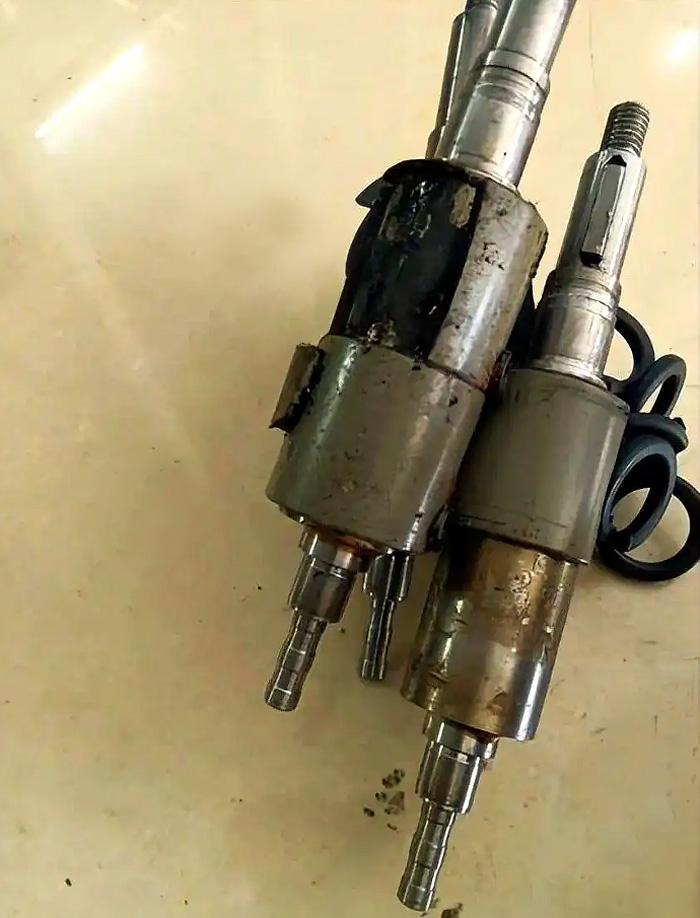As a key component in modern industry, servo motors have become increasingly prevalent, and with their widespread application, issues related to malfunctions have begun to surface. Among these issues, the bursting of magnetic steel in servo motors is a relatively common phenomenon. Burst magnetic steel is a common problem that typically results in difficulty when manually rotating the motor. When faced with this issue, many people's first instinct is to replace the entire shaft directly; however, this often entails significant costs, especially for shafts with significant differences in model and brand.
In actual maintenance, we have discovered a cost-saving method: when a servo motor becomes difficult to turn manually, this often means that the magnet has burst. Interestingly, shafts with magnetic rings are usually designed with double rings, and it is rare for both rings to break at the same time. Therefore, we can save a lot of money by cleverly joining the two shafts together to form one.
Servo motor rotating shaft and magnetic ring

However, although this method sounds simple, it is not easy to implement in practice. There are two challenges involved in dismantling magnetic rings: first, how to dismantle the magnetic rings, which are usually tightly fixed to the motor shaft with high-strength glue and are difficult to dismantle using conventional methods; second, even if you have mastered the dismantling technique, you need to pay attention to details and be patient, as the slightest mistake can result in the magnetic ring being scrapped. Next, let me introduce in detail the method of dismantling magnetic rings and the details that need to be paid attention to.
Since magnetic rings are extremely fragile and break easily when struck, we cannot simply knock them off to remove them. Instead, we need to use heat to soften the adhesive so that the magnetic ring can be easily removed. However, even if you know to use heat, it may not necessarily be successful in removing the magnetic ring, as controlling the heat is crucial. The experience shared here is the valuable insight I have gained after many failed attempts.
When heating a magnetic ring with fire, it should not be placed directly on a gas stove for heating. Instead, a torch should be used for the operation. This is because heating on a gas stove may cause a significant reduction in the magnetic ring's magnetic properties, which could affect the performance of the servo motor and even lead to alarm or overheating issues. During the heating process, care must be taken to control the heat level and avoid using an excessively large flame. It is recommended to move the torch around the perimeter of the magnetic ring. Once the temperature of the magnetic ring has risen, proceed to heat the shaft. The entire process should be conducted using a low flame and slow heating, with patience and attention to detail. While heating, gently shake the shaft vertically downward on the wooden board. If conditions permit, use a pair of pliers to grip an asbestos cloth and remove the magnetic ring from the wooden board. If you hear the magnetic ring cracking during this process, stop immediately, as this may indicate that the magnetic ring has developed cracks. If there is only one crack, you can attempt to remove the magnetic ring and apply 502 adhesive for repair, but the specific service life will depend on the situation.
When installing the magnetic ring, AB glue can be used for fixation. After installation, it is recommended to wait 12 hours before use to ensure that the magnetic ring can function stably.
Related servo motor magnet products;
Permanent magnet synchronous servo motor magnet paste method
Function and installation position of servo motor multipole magnetic ring
 China Neodymium And Ferrite Magnets Manufacturer & Supplier
China Neodymium And Ferrite Magnets Manufacturer & Supplier 


